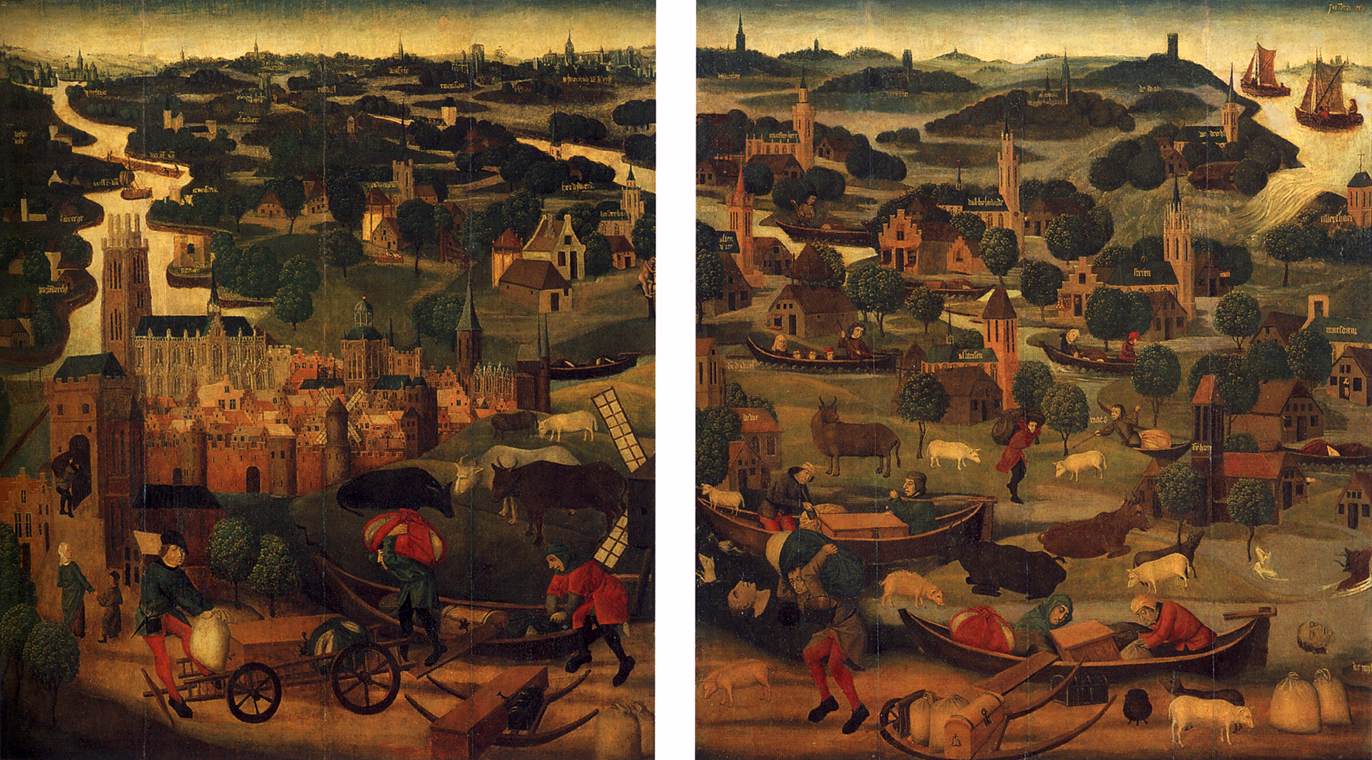Conway Castle - Panoramic View of Conway on the L.& N.W. Railway
I've been reading Bryony Dixon's book The Story of Victorian Film which can be seen as an extension of the brilliant free-to-access BFI Victorian Film archive. For example, she discusses Conway Castle - Panoramic View of Conway on the L.& N.W. Railway, a 'sedately paced' landscape film which the BFI website describes thus:
This beautiful film, shot in February 1898, has a dream-like quality and is hand tinted (possibly stencilled). It is believed to have been coloured some time after it was first shown as no contemporary reviews or advertisements refer to what would surely have been a major selling/talking point, 1898 being very early for coloured films.
This film was made in response to the first American phantom train ride film (by the British Mutoscope and Biograph's parent company, the American Mutoscope and Biograph Company), 'The Haverstraw Tunnel', which showed the scenery around the Hudson river and a tunnel and so delighted the audience that the British operation decided to make their own version, which also proved very popular - it showed not only in London but also in Rochester, New York, and then travelled all over Europe, still being shown in cinemas as late as 1910. This film is preserved by the EYE Filmmuseum, Netherlands.
Dixon's chapter 'Moving Images: Panoramas, Phantom Rides and Travel' explains that the first travel film made from a moving vehicle was Alexander Promio's Panorama du Grand Canal pris d'un bateaux, shot from a gondola on 25 October 1896. There are several versions of this uploaded on YouTube and I've embedded one of them below. Two years later Biograph produced Panoramic View of the Vegetable Market at Venice with a large format camera that gives a remarkably clear, almost 3D stereoscopic effect. Such films can be related in their subjects and composition to earlier picturesque views in art, as well as the more recent phenomenon of moving panoramas (views unfurled on rolled-up cotton with a lecturer explaining each scene). A little later we get more Italian travelogues with more than one shot - Visit to Pompeii (1901) is 8 minutes long and features a 360-degree pan of the ruins, a lovely misty view of Vesuvius with sheep providing motion in the foreground and then a ride up the volcano's funicular railway (another version of the 'phantom train ride'). One more to recommend you look at is Ride on the Peak Tramway (1900), filmed in Hong Kong, which has a grainy, mesmerising quality. 'As the tram crests the peak it's just possible to see the huge vista of Victoria Harbour and Kowloon laid out before us, as if viewed from the world's greatest natural rollercoaster.'
Another interesting genre discussed in Bryony Dixon's book is the sea wave film. 'Nearly every report of early film screening mentions audience reaction to films of sea waves. Films showing the movement of water were very popular for their mesmeric effect as well as for the initial shock they gave audiences at their feeling of 'absolute realness''. She quotes a reaction to Birt Acres' early Rough Sea at Dover (1895) - "It is not too much to say that persons seated near the screen must have shrunk from the approaching billows which gathered, lifted their foam-tossed crests, curled and crashed down with an absolute realism from which nothing was wanted but the roar." Again there are obvious precedents in art and recent photography (Acres was himself a photographer). Cecil Hepworth's film Rough Seas Breaking on Rocks (1899) reminds me of the 'rough seas' genre of postcards I wrote about here in 2011. Dixon lists other examples but notes in particular 'the beautiful Sea Cave Near Lisbon, filmed by Henry Short for Robert Paul in 1896, in which Portugal's famous Boca di Inferno (Mouth of Hell) frames the waves swirling and smashing against the rocks.'








%2CAurangzeb_Hunts_Nilgais%2C_ca._1660%2C_Chester_Beatty_Library%2C_Dublin.jpg/800px-Hashim_(attributed)%2CAurangzeb_Hunts_Nilgais%2C_ca._1660%2C_Chester_Beatty_Library%2C_Dublin.jpg?20190907145931)






.jpg)







 <
<

.jpg)









